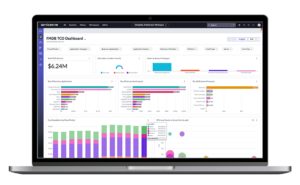As organizations navigate the post-pandemic landscape, it’s becoming clear that having a successful remote work program will be a massive success factor in both 2020 and the years to follow. But many IT leaders have limited experience managing staff remotely, and they’re discovering it brings an entirely new set of challenges — not just in terms of the technology required to make remote work possible, but more so the soft skills needed to ensure employees stay happy, connected, and productive.
This post outlines three simple rules to help IT leaders manage effectively in the virtual workplace, regardless of how long it remains a necessity to do so…
Avoid Unjustified Productivity Paranoia
The most common objection to remote work is this: “How do we know our employees won’t sit on the couch eating bonbons when they should really be working?”
Well, the bad news is that you can’t know if your employees are staying productive at home every second of the day. But the good news is — if you’ve filled your workforce with quality people — you can and should trust that most employees will strive to adapt and maintain productivity as best they can.
In other words, the number of employees who see remote work as a chance to ride the gravy train is likely much smaller than you’d think.
But many managers believe the opposite, which leads them to treat all employees with an air of suspicion — figuring those who don’t deserve it will never take offense and that those who do will notice and improve.
Unfortunately, it rarely works that way. Suspicion and distrust rapidly breed resentment, especially when it isn’t justified by past behavior.
The important thing to understand here is that you should make a conscious effort to trust each employee’s productivity level until they give you a reason not to. Otherwise, you could be putting the morale of the whole group at risk.
Never Let Expectations Go Unspoken
When interactions can only be mediated through audio, video, or written text, the likelihood of miscommunication grows exponentially.
All of the subtle cues we exchange subconsciously in-person — things like tone, facial expression, body language, etc. — become very difficult (or impossible) to perceive. But lack of in-person interaction isn’t the only problem here; remote work environments typically reduce the overall number of interactions between managers and employees overall too.
Consequently, it becomes extremely easy for expectations to get lost in translation — expectations that otherwise might’ve been communicated intuitively via routine day-to-day interactions.
The solution to this problem is simple though: make your expectations crystal clear, then communicate them early and often.
Emphasize Outcomes Over Activities
In a physical workplace, managers have clear visibility to monitor employees’ day-to-day activities. However, it’s very difficult to maintain that same level of connectedness in a remote work environment — leaving managers anxious over how time is being spent and compelling staff to continually prove their productivity.
Naturally, managers attempt to regain visibility with an increased cadence of virtual team meetings and individual check-ins. But the frequency of manager-employee communication isn’t the only thing that needs to be adapted for a remote work environment; the content of communication should shift too.
More specifically, managers should try to keep all communication focused around the outcomes employees are trying to achieve and any impediments standing in the way — discouraging “in the weeds” conversations that serve little purpose other than to demonstrate work is being done.
Using ITFM/TBM to Enable a Successful Remote Workforce
As organizations continue building and refining remote work programs to navigate the “new normal,” the importance of IT cost efficiency is greater than ever. IT leaders hold a big responsibility to create the best remote work experience possible while also using the fewest resources possible, but that’s a tall order without actionable transparency into technology costs, what’s driving them, and the value they deliver.
But how do you achieve that actionable transparency? A mature ITFM/TBM program is the only answer.
Reach out today to see how Nicus can help you build it.





